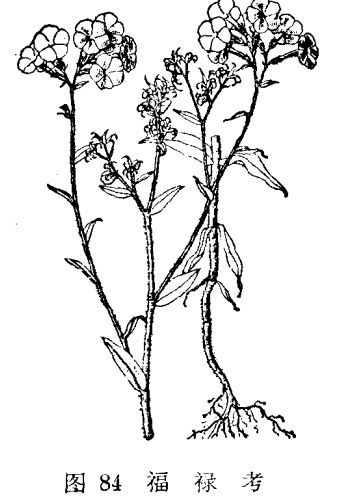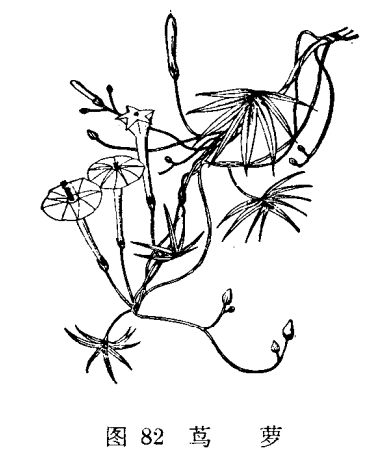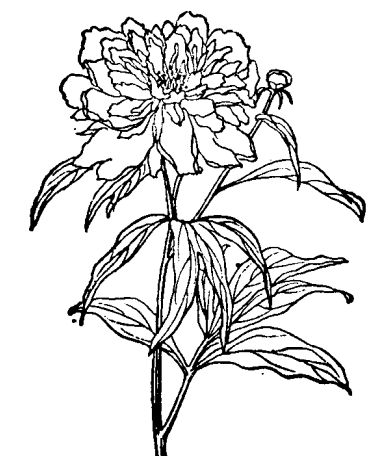The main producing areas and planting methods of Fulukao
[alias] oleander, plum blossom, Platycodon grandiflorum.
[families and genera] Carpinaceae, Phlox.
Annual herbs, plant height 15-45 cm. Stem erect, much branched, with glandular hairs. Basal leaves opposite, others occasionally alternate, broadly ovate, rectangular orbicular to lanceolate. Cymes terminal, Corolla salverform, 2-2.5 cm in diam., lobes 5, orbicular, original rose-red. Florescence 5m / m-June. Capsule ellipsoid or suborbicular. Seeds Obovate or elliptic, elevated abaxially, ventral flat. The weight of a thousand grains is 1.55 grams.
[varieties, forms and varieties] according to flower color: (1) monochromatic: there are white, goose yellow, a variety of different shades of reddish purple, as well as lilac and dark purple. (2) complex color: including internal and external color, crown tube and crown edge, throat spots, crown edge stripes, white pentagonal star spots in the middle of crown edge, etc. (3) tricolor: such as rose red with yellow heart in base white, or purplish red with white star blue dot and so on.
According to the petal type: (1) var.totundatal: Corolla lobes are large and broad, so that the shape is round; (2) star petal species (var.stellaris,var.cuspi-data): Corolla lobes are tridentate at the edge, and the middle tooth length is 5 times longer than the bilateral teeth; (3) whisker species (var.fimbriata): Corolla lobes are denticulate at the edge; (4) radiation species (var.radiata): Corolla lobes are lanceolate rectangular round, apex tip.
In addition, there are dwarf species (var.,uura) and large flowers (var.gigantea).

[Origin and distribution] originating from southern North America, it is widely cultivated in many countries.
[habit]
The cold resistance is not very strong, the sex likes the mild climate, does not like the extreme heat, basically can overwinter in the open field in Shanghai area. Like good drainage and easy soil, not resistant to drought.
[propagation] it was sowed in the open field seedling bed or pot at the beginning of September in autumn, and the optimum temperature for germination was 15 ~ 200C. Sprouting neatly. When the temperature is high, it lurks without sprouting.
[cultivation] the seedlings grow slowly, although they can survive the winter in the open field, but the seedlings are too small to manage, so they are accustomed to overwintering in a cold bed (4 to 5 inch pots) and planting in late March, with a distance of 30 cm and a dwarf species of 20 cm. If sowed in the greenhouse in early spring, it can also blossom from September to October, but it does not grow well because of the heat, the clump is small and the development is poor, and the ornamental value is not high.
[seed harvesting] the capsule is uneven in maturity and can crack and scatter the seeds at maturity. It takes too much work to harvest one by one; when most of the capsules in the whole inflorescence turn yellow, they can be picked at the total pedicel and dried and threshed.
[use] for flower beds and flower border materials, can also be used as indoor potted flowers in spring.
An introduction to its morphology and growth habits, as well as its disease treatment methods. Many people may have seen it, but they do not know it very well. Many people are deeply attracted by its beauty. Its petals are like cherry blossoms with rich and colorful colors and are loved by many people. Today, I will take you to understand the shape and growth habits of Fulukao, as well as the treatment of its symptoms.
It is a perennial herb native to North America, with a height of 10-15cm, cold tolerance of-40 degrees, extreme drought tolerance, evergreen at-12 degrees, blooming in spring and autumn, early April in Liaoning and late March in Beijing. When flowering, such as pink carpet, known as "flowering lawn", "color carpet". In Japan, it is known as "paving Sakura". It is as famous as Sakura, making more patterns, words or planting with the lawn, with bright and strong color contrast. It is the best ground cover plant to replace the traditional lawn.
Morphological characteristics
It is a perennial evergreen perennial herbaceous flower with cold-tolerant roots, with purplish red, white, pink and so on. The old stem is semi-lignified, with a height of 8 Mel 10 cm, dense branches and leaves, and creeping growth. Leaves acicular, clustered, leathery, about 1.3 cm long, bright green in spring, dark green in summer and autumn, gray-green after frost in winter, leaves and flowers blooming at the same time. Whenever the flowering season, blooming flowers will cover all the stems and leaves, forming a sea of flowers, Baiyan Zhengfang, elegant and lovely. Leaves alternate, basal leaves opposite, broadly ovate, rectangular or acicular, 2 to 7.5 cm long, apex acute or protruding, base attenuate or slightly clasping, entire, pilose above, pilose only below, leaves sessile, Cymes terminal, pubescent; bracts and bracteoles striate; calyx tubular, lobes striate, pilose outside Corolla saucer-shaped, 2 to 2.5 cm in diameter, lobes, orbicular, stamens not protruding, flowers goblet-shaped, fragrant, 5 petals, oblong, deeply notched, with a crimson ring at the base of the petals, 2 cm in diameter. The florescence is from May to December, the first florescence is from April to May, the second florescence is from August to September, and sporadic florets bloom one after another in December. The genus Hydrangea of the family Carpinaceae. Meadow-shaped perennial herbs. High 15cm, leaves opposite linear to subulate, about 1-2.5cm long. Tufted, evergreen. Flowers mostly dense, terminal Cymes, purplish red, white, pansy or pink. Flowers 2cm in diameter, Corolla lobes shallowly concave.
Growth and ecological habits
Like the sun but a little shade and can grow, avoid waterlogging. The flower grows strongly, does not choose the soil, likes the sunny and dry place, but the calcareous soil is the most suitable for growth, and can also grow and blossom in the semi-shade. And it has the characteristics of simple planting, strong adaptability, drought tolerance, cold tolerance and saline-alkali tolerance. Like light, avoid hot and rainy summer. It can grow normally in sunny or semi-shady places. The requirement of soil is not very strict, but it is more suitable to grow in fertile, moist and well-drained soil. The flower originated from New York, North Carolina and Michigan. It was introduced into Europe in 1732 and cultivated all over the world.
Garden use
Perennial evergreen perennial herbaceous flower, it is a unique variety in the Fulu test line. In recent years, Fulukao has been paid more and more attention in landscaping. It not only has high coverage, but also has strong ornamental value. It is an excellent ground cover plant, which can replace the traditional lawn and is a good ground cover plant. It can be planted in a large area on flat land, sloping land or hanging on the wall, or planted in a flower box in front of the window. Because of its long flowering period and long green period (330mur36 days), Cong Fulukao is favored by the masses, especially when it blossoms in early spring. It is most suitable for planting flower beds in the courtyard or in the rock garden, and the group ornamental effect is excellent. It can be decorated with decorative materials or planted in hanging pots. Used for flower beds, flower borders, quilts.
Symptoms: Phlox leaf blight the main feature of the disease is that the lower leaves of the plant first withered and yellow, and gradually developed upward, until the whole branch died. The disease occurs seriously in old plants, but does not affect seedlings and cuttings with new roots.
Pathogen and pathogenesis: the pathogen of Phlox leaf blight is an abiotic factor, that is, the disease is a non-infectious physiological disease. The reason is that the new branches germinated from the old stems in spring do not get enough water supply, so that the lower leaves wither and die at first.
Prevention and treatment methods: in view of the cause, when the old stem germinates new branches in spring, increase sprinkler irrigation, increase soil water content and air humidity, in order to reduce plant transpiration and alleviate the disease, but generally can not return to normal.
The above is the introduction of the shape and growth habits of the clump Fulukao, as well as the treatment of its symptoms. I hope it can be helpful to the majority of flower friends. Please continue to pay attention to the succulent flower bed and learn more about flower care.
Sugen Fu Lukao Phlox paniculata Sugen Fulu Kao Picture Book: Sugen Fulu Kao how to raise / Sugen Fulu Kao how to propagate Sugen Fulu Kao name and points for attention the introduction of Sugen Fu Lukao Phlox paniculata is a perennial perennial herbaceous flower, plant height 15~20cm, pubescent, stem branched after growth. Leaves alternate, long oval, upper leaves clasping stem. Cymes terminal, flowers with slender flower tube, Corolla shallowly 5-lobed. There are white, yellow, pink, red and purple, markings and complex colors, most of which are pink and pink. The florescence is from June to September. Capsule ellipsoid or suborbicular, brown. The seeds are Obovate or oval, raised abaxially, flat on the ventral side, and the 1000-grain weight is 1.55g. Sugen Fulu plant is short, a variety of colors, elegant posture, can be used as flower beds and courtyard cultivation, can also be pots to do flowers, three plants in each pot, the plant has been plump. The blooming period of Sugen Fulukao coincides with the summer when other flowers bloom less, which can be used to decorate flower beds, flower borders, and embellishment in the lawn. It is an excellent garden perennial flower, and it can also be used as a potted or cut flower. The morphological characteristics of perennial herbaceous flowers are perennial herbaceous flowers with 15~20cm plant height, pubescent and branched stems after growth. Leaves alternate, long oval, upper leaves clasping stem. Cymes terminal, flowers with slender flower tube, Corolla shallowly 5-lobed. There are white, yellow, pink, red and purple, markings and complex colors, most of which are pink and pink. The florescence is from June to September. Capsule ellipsoid or suborbicular, brown. The seeds are Obovate or oval, raised abaxially, flat on the ventral side, and the 1000-grain weight is 1.55g. The ecological habits of Fu Lukao in Sugen. Fu Lukao prefers sandy loam and humid environment with good drainage. Cold resistance, avoid cool sun, avoid waterlogging and saline-alkali. The strongest growth in sparse shade, especially shade or western background, or mixed planting with flowers slightly taller than it, such as echinacea, is more beneficial to its flowering and root Fulukao cultivation techniques 1. Open field cultivation should choose the land with leeward and sunny and good drainage, combined with soil preparation and application of stable manure or compost as base fertilizer, the effect of diammonium phosphate is the best. From the beginning of May to the middle of May, the suitable distance from plant to 40~45cm is suitable, and the planting depth is slightly deeper than the original depth 1~2cm. Often water the soil during the growing period to keep the soil moist. During the peak growing season from June to July, human dung or cake fertilizer can be recovered for 1 or 3 times. In the northeast, some varieties should be covered with grass or soil to survive the winter. In the middle of November, frozen water should be watered once, and "green water" should be watered again at the beginning of spring. (2) the pot should be changed once after the new buds germinated every spring, and the soil should be changed when changing the pot. 3 parts of garden soil, 3 parts of deer dung and 1 part of furnace ash should be mixed. A small amount of diammonium phosphate can be applied to the bottom of the basin as base fertilizer, and the basin should be watered thoroughly after changing the basin. When the new buds grow to 6~7cm, some robust buds should be selected according to the size of the basin, and the extra buds should be cut out. Generally speaking, the pots with a diameter of 20cm can leave 4-5 buds. Manure should be applied in time during the growth period, and mature human feces and urine, bean cake water and chemical fertilizer solution can be used for topdressing every 2 to 3 weeks. Pay attention to watering, keep the soil loose and moist, and pay attention to adjust the phototropism to make the plant strong and straight. There are few diseases and insect pests in Fulukao, and there are occasional leaf spot disease and aphids. When leaf spot occurs, 50% carbendazim 1000 times solution can be sprayed for prevention and control. Aphids can be brushed off with a brush dipped in dilute laundry powder, and 1500 times of omethoate EC can be sprayed when a large amount occurs. The propagation method of Furukao can be propagated by sowing, ramet and cuttage. 1. Sowing and reproduction: sowing cold beds in northern areas to survive the winter, we should pay attention to anti-freezing, spring sowing should be earlier, flowering is shorter than autumn sowing, and more dead in the rainy season. Split propagation: break off the sprouting tillers of the mother plant by hand before May, plant every 3 to 5 buds together, pay attention to watering, open field planting can be divided into plants every 3 to 5 years. 3. Cutting propagation: when the new buds grow to 5CM or so in spring, break the buds off, insert them into the seedbed and shallow basin filled with plain sand, buckle with plastic film, and place them in a place where the indoor sunlight is not direct. If the reproduction quantity is not too large, you can set up a shade net shed to cut, the temperature is about 20 degrees Celsius, spray on the leaf surface and seedling bed (1000 times omethoate + 1000 times carbendazim solution), have insecticidal and germicidal effect, and can take root in one month. The variety classification of Sugen Fu Lukao 1. Dwarf plant height 30~50cm, leaves oval-lanceolate, leaves and stems purplish, smooth leaves, whole plant glabrous, large flowers, cold tolerance. Jilin Province can spend the winter in the open field. two。 Tall type plant height 50~70cm, leaves oblong-lanceolate, the whole plant hairy, flowers small, not very cold-resistant. Jilin Province can cultivate soil to survive the winter. Sugen Fu Lukao distribution area Origin: South North America suitable area: | North China | East China | Northwest China Sugen Fu Lukao's functional use plant is short, the flower color is diverse, the posture is elegant, it can be used for flower bed and courtyard cultivation, it can also be used to put flowers on the pot, three plants in each pot, the plant has been preserved full. The blooming period of Sugen Fulukao coincides with the summer when other flowers bloom less, which can be used to decorate flower beds, flower borders, and embellishment in the lawn. It is an excellent garden perennial flower, and it can also be used as a potted or cut flower. The garden use of Fukao can be used as flower beds, border flowers, lawns and ground covers. In addition, it can also be used as a choice of cut flowers, ground covers and potted plants.
- Prev

What are the two kinds of flowers belonging to the same genus as pineapple
1. Round leaf pineapple (Q.cocczneaMoench). Also known as orange red pineapple. Annual twining herbs, up to 4 meters long. Leaves alternate, ovate, entire, apex acute or acute, base cordate, petiole as long as leaf blade. Cymes axillary, with 3. 6 flowers. Corolla high foot dish shape
- Next

Propagation methods and methods of Paeonia lactiflora
Paeonia lactiflora is mainly propagated by individual plants, and it can also be sown. 1. Split-plant method: this method can maintain the excellent characteristics of the variety, and the flowering date is earlier than that of the sower. The ramets of Paeonia lactiflora must be carried out in autumn, usually from late September to early October, when the roots can resume growth for a period of time before winter.
Related
- Fuxing push coffee new agricultural production and marketing class: lack of small-scale processing plants
- Jujube rice field leisure farm deep ploughing Yilan for five years to create a space for organic food and play
- Nongyu Farm-A trial of organic papaya for brave women with advanced technology
- Four points for attention in the prevention and control of diseases and insect pests of edible fungi
- How to add nutrient solution to Edible Fungi
- Is there any good way to control edible fungus mites?
- Open Inoculation Technology of Edible Fungi
- Is there any clever way to use fertilizer for edible fungus in winter?
- What agents are used to kill the pathogens of edible fungi in the mushroom shed?
- Rapid drying of Edible Fungi

